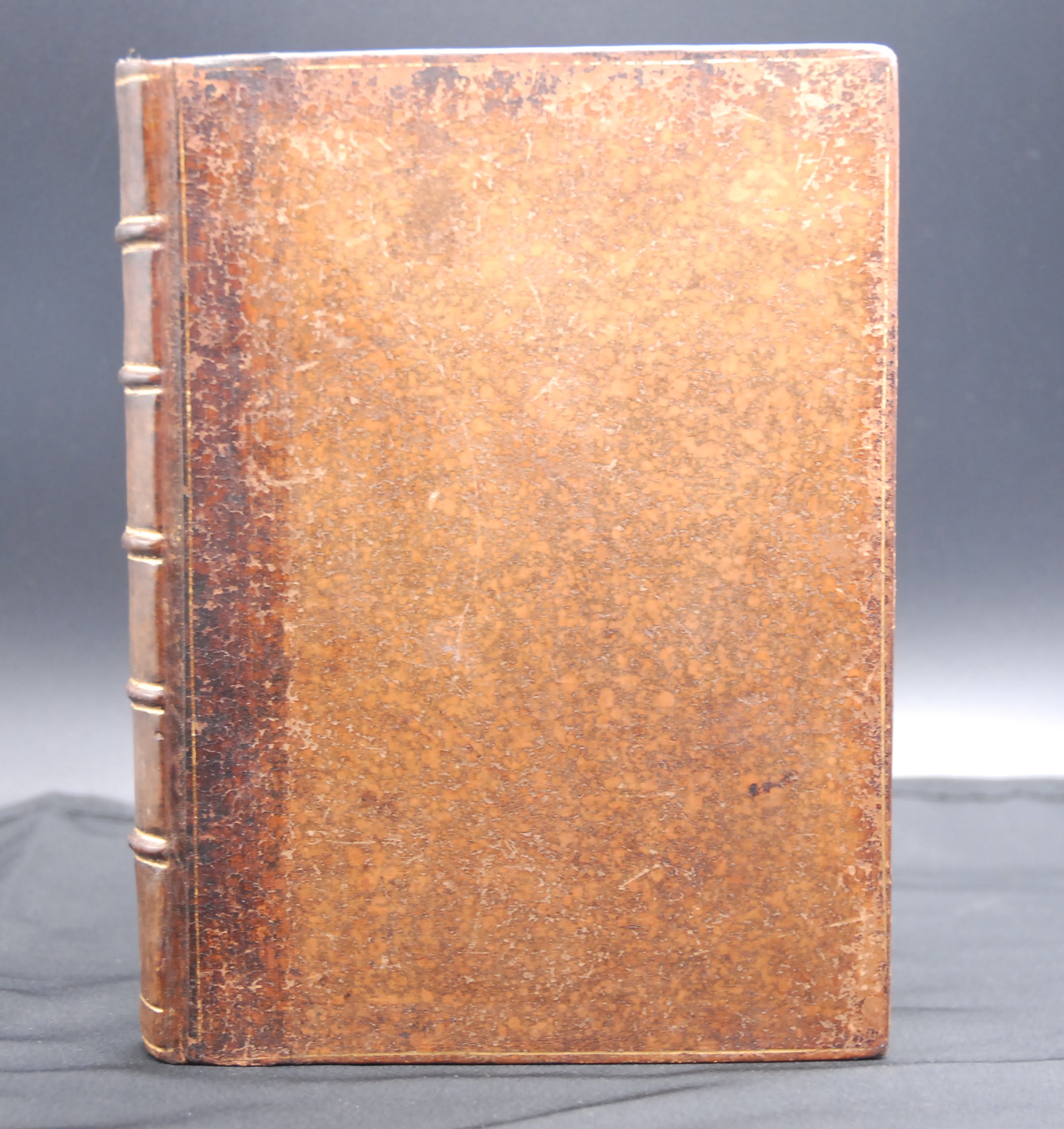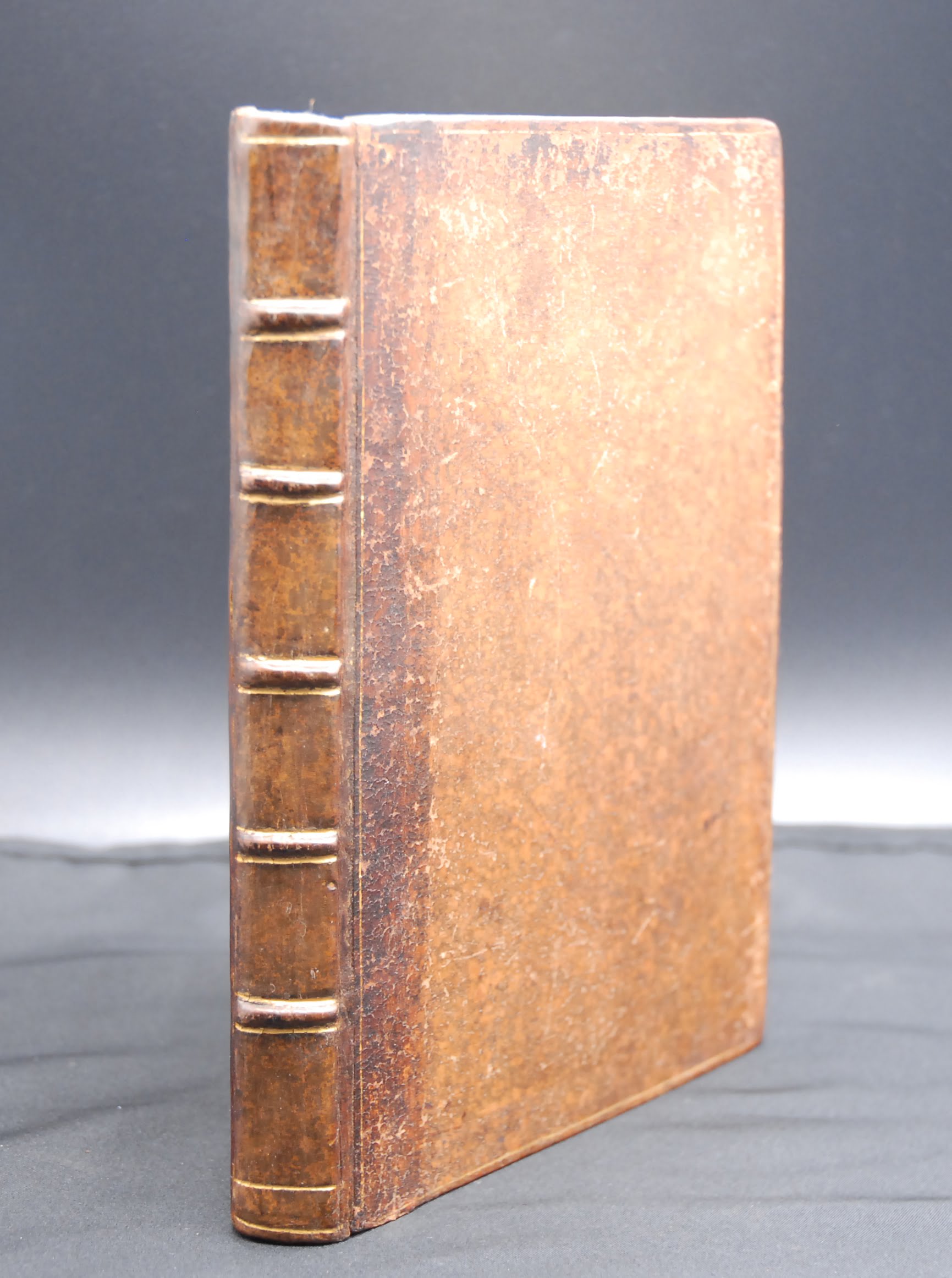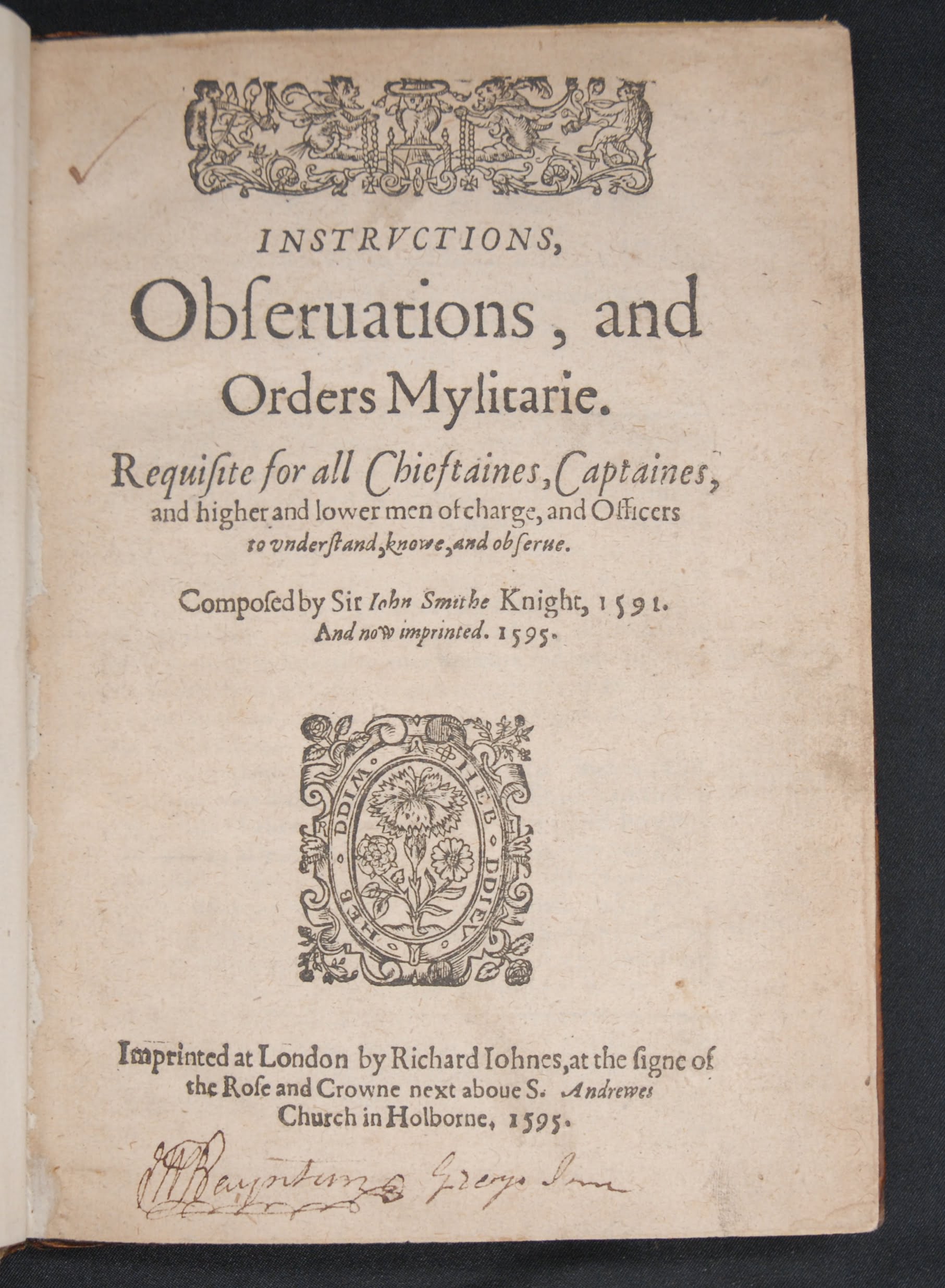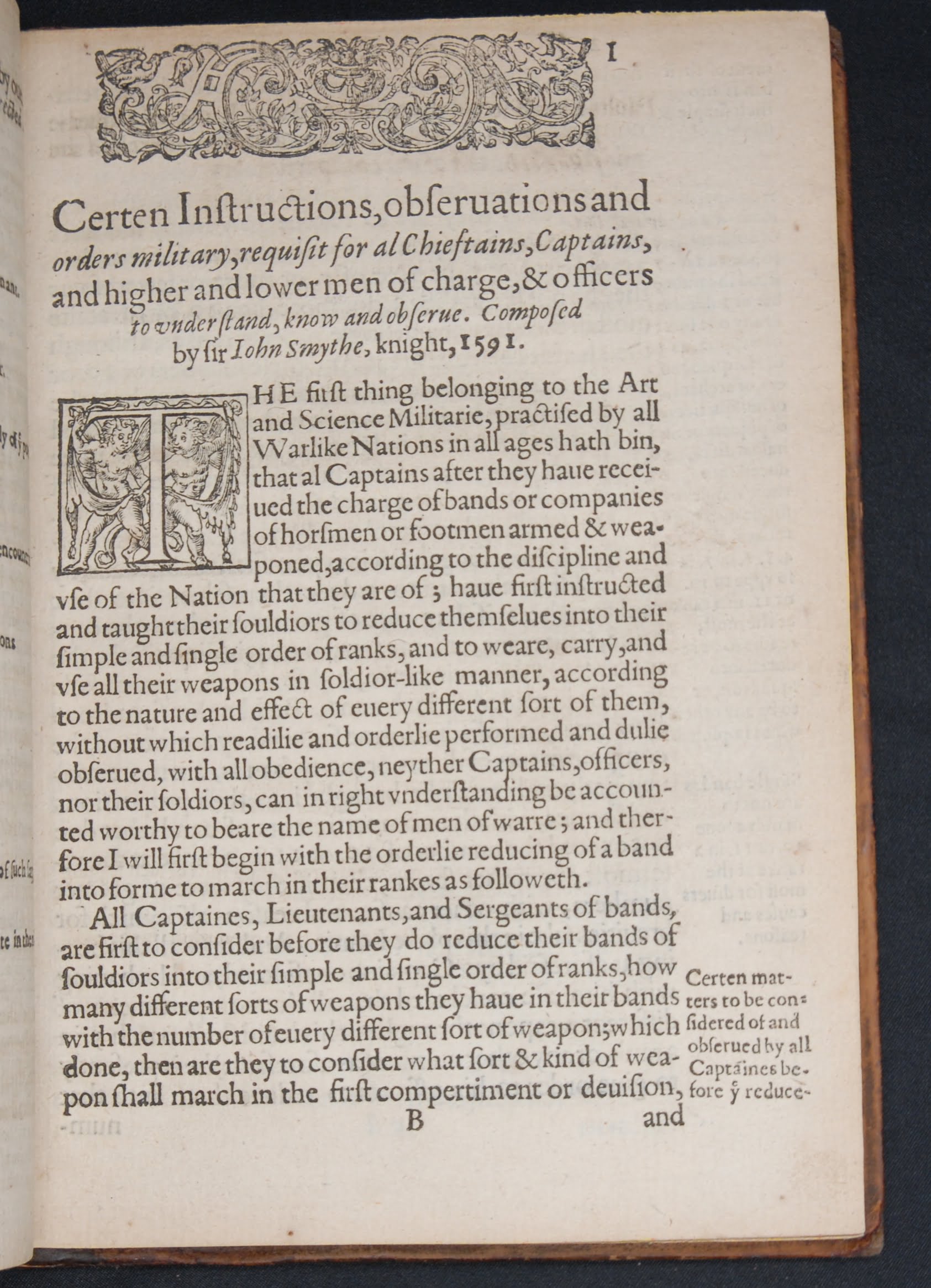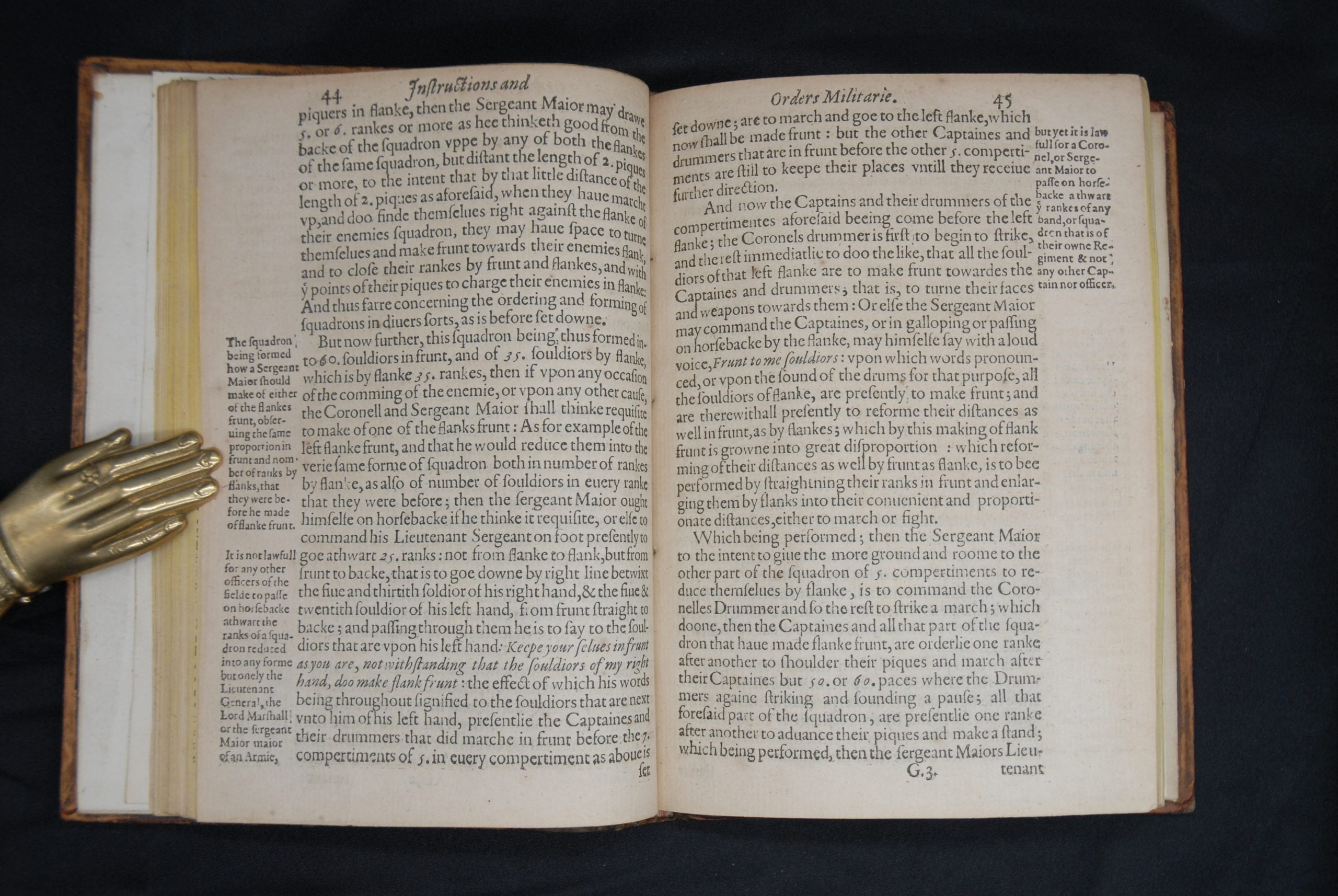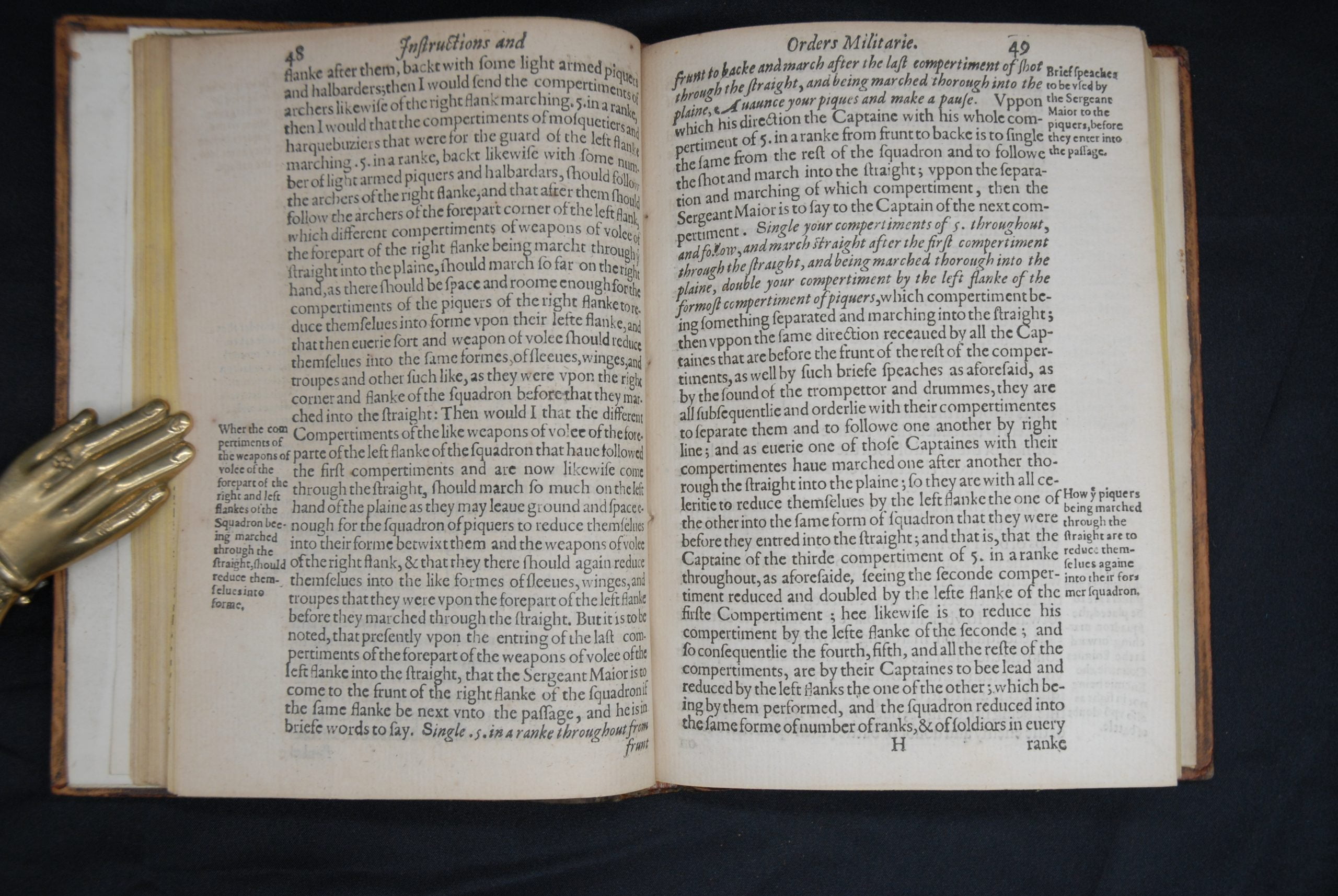SMYTHE, Sir John
Instructions, obseruations, and orders mylitarie. Requisite for all chieftaines, captaines, and higher and lower men of charge, and officers..
London, By Richard Iohnes, 1595£3,750.00
4to. pp. [xxxii], 111, 124-220: pi1[=4[par.]2], [par.] – 3[par.] , 4[par.]², (-4[par.]2), A², B-Y , 2A-2E . Roman letter, some Italic. Woodcut printer’s device on title, grotesque woodcut headpiece above, woodcut head-pieces and initials, ‘J. W. Baynton Grays Inn’ in C18th hand in lower blank margin of t-p., armorial bookplate Thomas Francis Fremantle, Baron Cottesloe, on pastedown, C19th autograph of Albert Way (1805–1874, English antiquary, and principal founder of the Royal Archaeological Institute) above. Light age yellowing, title a little dusty at margins, closed tear in lower edge of P2, rare minor mark or spot, upper margin a little short. A very good copy in C18th speckled calf, covers bordered with a gilt rule, edges gilt scrolled, rebacked to match.
A reissue, with expanded preliminaries and cancel title page, of ‘Certen instructions, observations and orders militarie’ (STC 22884), by the great contemporary authority on archery, the soldier and diplomat Sir John Smythe. Smythe (1533-1607) gained his military experience as a volunteer in France, the Low Countries and Hungary. Well-read and fluent in Spanish, he was appointed Elizabeth I’s special Ambassador to Spain on the 18 November 1576. After his ambassadorship, Smythe re-entered the political arena as a critic of the English involvement in the Eighty Years’ War in the Low Countries. In 1590 Smythe published ‘Certain Discourses’, a fervent plea for the retention of the longbow as the weapon of choice for the English soldier. Citing both modern and ancient sources, Smythe recalls great victories won by the bow and associates its use with true manliness and English military potency. The book initiated a controversy on the relative strengths of bow and handgun, but it also contained vehement criticisms of the “new disciplinated men of war” who commanded English forces in the Low Countries. “Leicester’s party now used their influence at court to obtain the suppression of the book, and having gained their end, they spread the report that its circulation was prohibited on account of its falsehood and foolishness, and that its author ‘was judged by her Majesty and her council’ to have been for some years in his dotage.” Cockle. Smythe spent the months that followed unsuccessfully petitioning Lord Treasurer Burghley (his occasional patron) to have this suppression reversed. ‘The agitation caused by his first work having subsided’ (Cockle) Smythe issued this second edition of the work, slightly expanded in its preliminaries. Cockle records that from the writings of Smythe and Patten “it is possible to gather a good general state of the army in England in the middle of the sixteenth century… So conservative is the author, that he would reject any man for an archer who should draw his bow with two fingers, after the new fashion, instead of with three, after the old. .. When one considers the imperfections of the fire arms of that age , one can understand how it was that old soldiers like Sir John should be prejudiced in favour of the bow, which had proved so effective in the past.”
Cockle 60. ESTC S117635. STC 22885In stock


